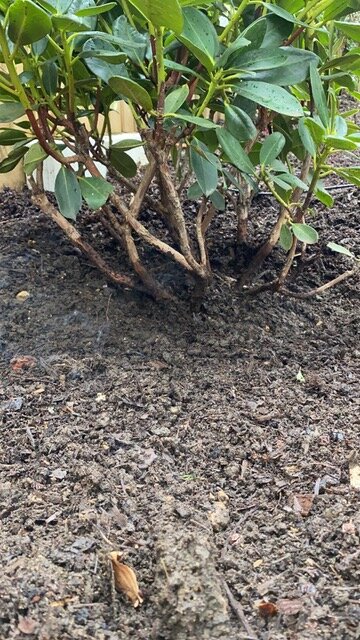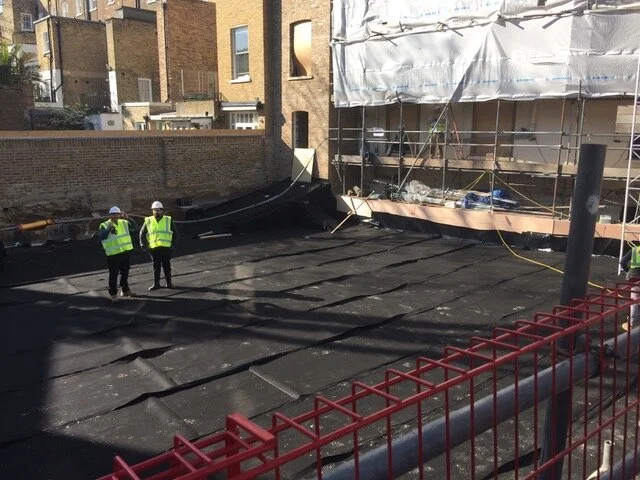How deep is your soil?
Soil depth is the topic for the final blog in the series of blogs on Common Site Issues.
When Alaster Anderson is called in to rescue newly planted gardens blighted by plant failure and poor plant health, one culprit is surprisingly common.
Trees, shrubs and perennials are all often planted too deep or not deep enough.
When planting is too deep
This frequently happens with trees. Trees are routinely installed early in a project, then when the final landscaping has been completed extra soil is added around their base to even up levels across the garden.
If this has happened, we have two options:
Where possible we dig plants up and lift them so they are at the correct planting depth.
Alternatively we can dig off excess soil down to the top of the rootball and ideally out to the edge. To mitigate the change in level we often use our unique stainless-steel “cookie cutters” (planters without bottoms).
Rhododendron planted too deep. These plants particularly hate it
Some species particularly hate being planted too deep – members of the ericaceous group such as rhododendrons and azaleas.
When a garden design includes these we are pedantic about planting at exactly the right depth (with soil around but not over the rootball) and use mulch that does not swamp them.
The problem is that too much soil over a rootball stops air reaching the roots which suffocates the plants.
When planting is too shallow
This can happen when unskilled or untrained contractors are left to plant unsupervised and is common with perennials. They are popped into the soil and look fine but not quite deep enough so the contractor stands on the soil to squash it down.
The upshot is that when the soil settles, the plant sits up proud. This not only undermines the aesthetics of the garden, it leaves the plants susceptible to drying out because their roots are above the ground.
This leads to a secondary problem in the case of trees, stability. There are two things that give a tree stability. The first is either a hidden ground anchor or tree stake the second, the surrounding soil around the rootball. When a trees rootball rocks around in the planting hole we call this wind rock. This movement prevents roots from establishing in the surrounding soil… a garden disaster!
The first two blogs in the series can be found here, Don’t Get Bogged Down (Poor Drainage) and The Secret of Healthy Soil (Soil Profiles).
You can reach us on 0207 305 7183 or email at enquire@alasteranderson.com





